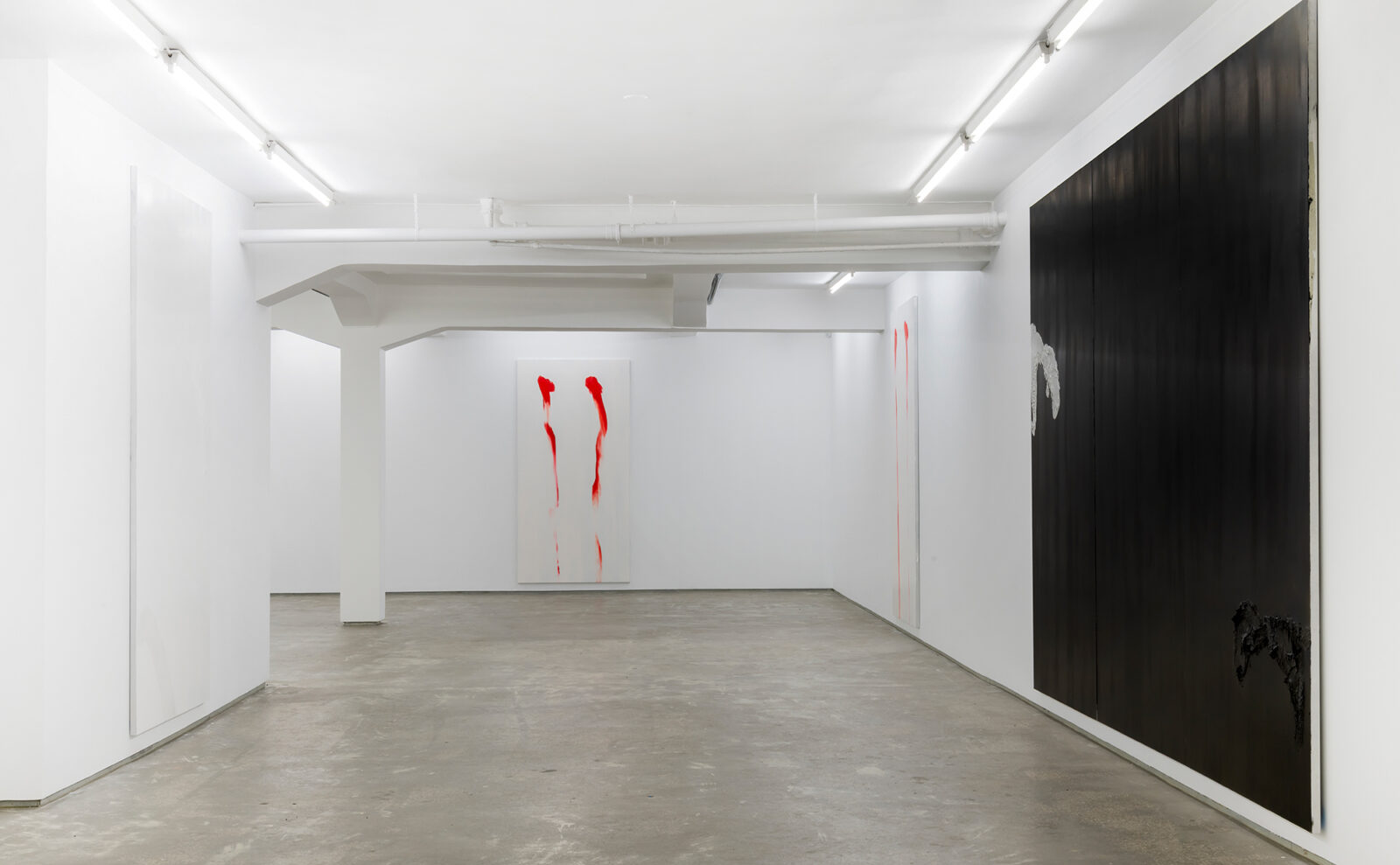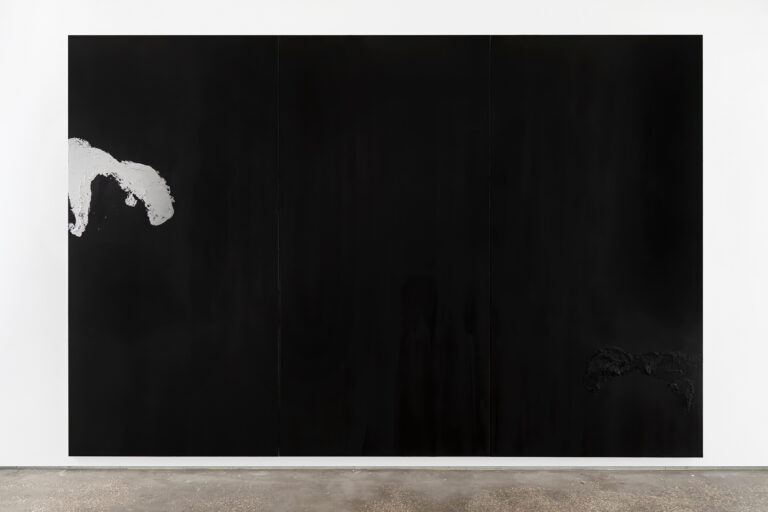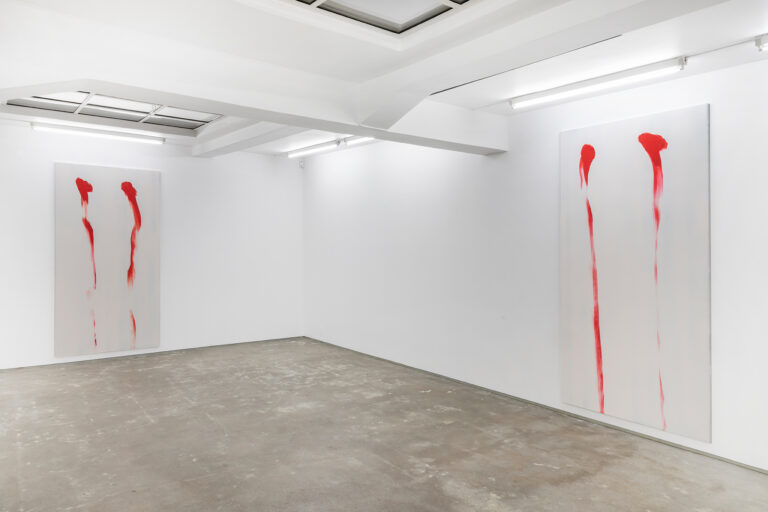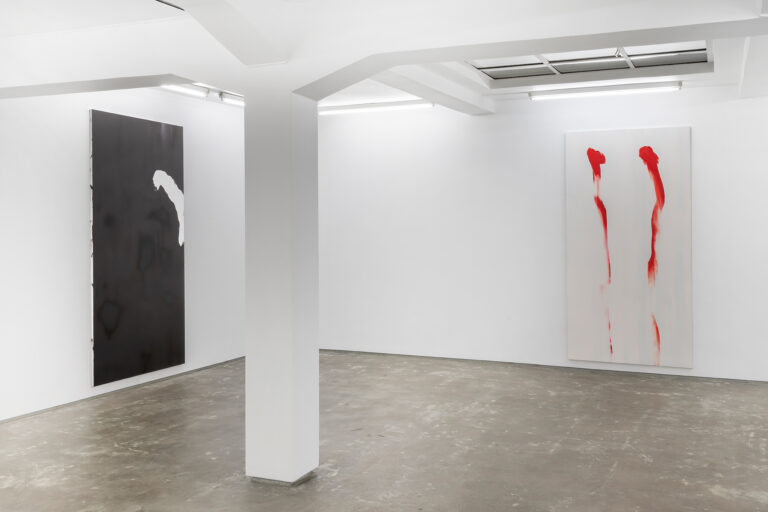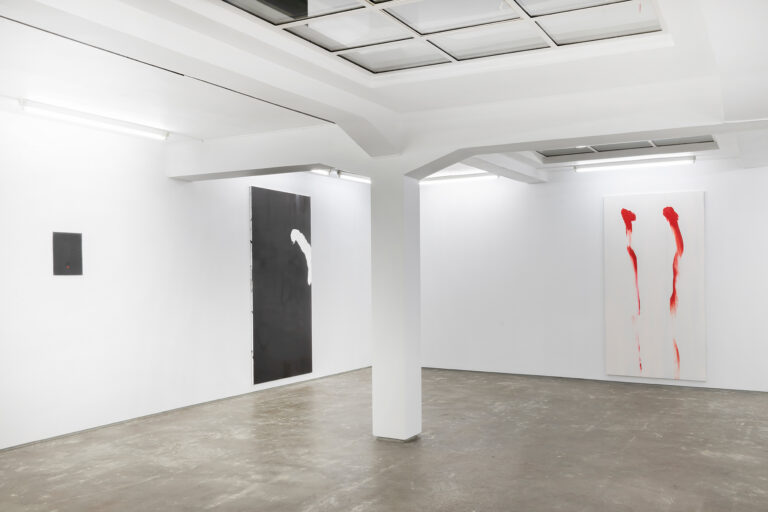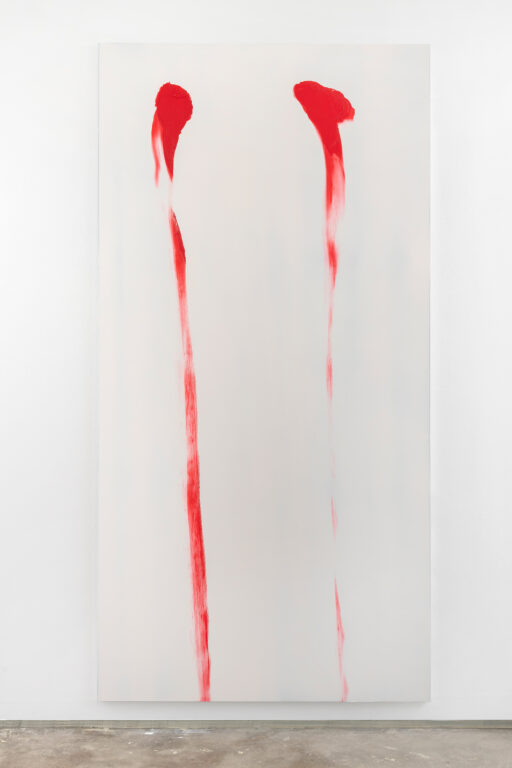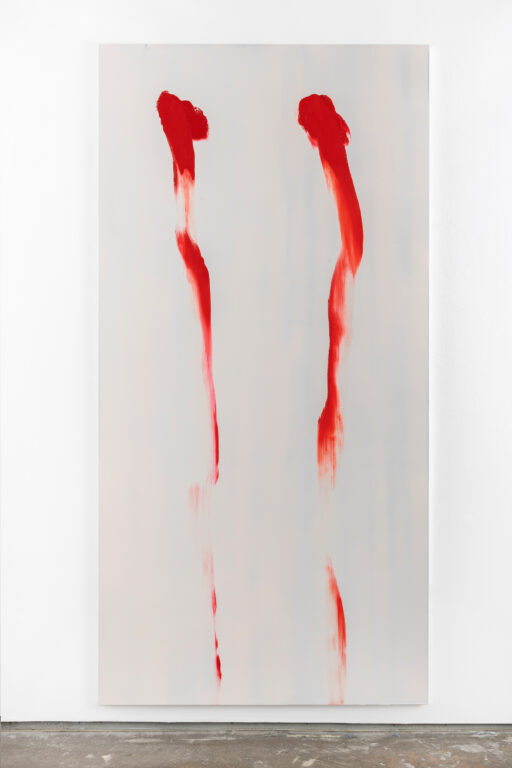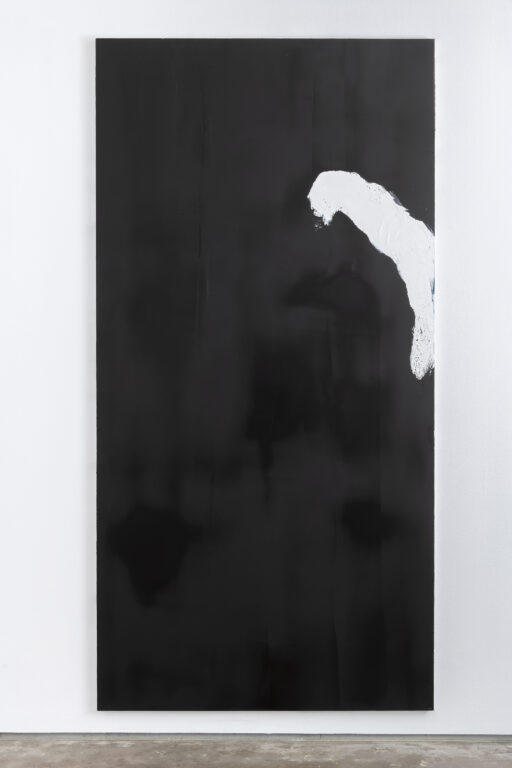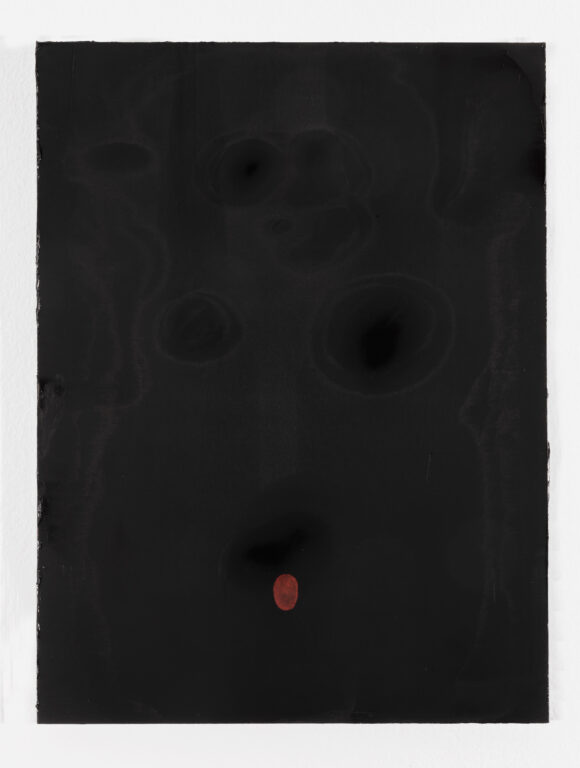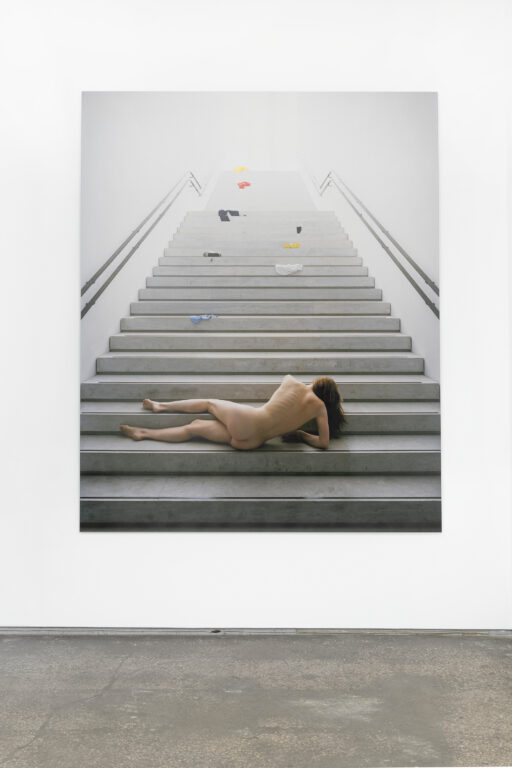Exhibition opening 19.01.2023, 18.00-20.00
Still Life
- Text by Ann Gallagher
Space, temporality, movement, light and sound are all aspects central to A K Dolven’s artistic practice, just as implied or actual human presence is an essential element. In Still Life these key features are distilled in recent artworks using two of the varied range of mediums regularly employed by the artist – painting and lens-based images. While the inherent action is supported on static planes of aluminium or photographic paper, it remains evident. This is life merely stilled.
In the large-scale photograph and stills entitled stairs 2022, time is arrested at specific points during an enigmatic physical action that unfolds on the architectural stage of a tall, wide staircase. It was performed on one of the staircases between the floors of Nasjonalmuseet in Oslo prior to its public opening. stairs 2022 revisits an earlier film installation by the artist. stairs 2002 similarly focussed on a female figure descending or ascending a staircase in the process of dressing or undressing, with items of clothing scattered on the steps. In the earlier work the action took place on an artificially lit, red-carpeted domestic staircase, and was viewed through peepholes; the props of voyeuristic and potentially erotic entertainment confounding an essentially playful and innocent action. Here the audience encounters the figure engaged in a purposeful rolling movement up or down the steps in a distinctly institutional staircase, viewed full frame and daylit. The movement of the female form suggests extreme strength and purpose, while simultaneously appearing poignantly vulnerable in her growing nakedness on the hard concrete. In the suspended moments when the figure is fully nude, the human form assumes a sculptural presence, while in a single image the woman is confidently poised to exit the action, fully clothed in outdoor wear, at the top of the stairs.
Vertical abstract paintings, such as Still Life I and Still Life II, indicate the artist protagonist of an action through the paint vestiges that remain as a result of being suspended by a rope over the paintings. Her shoulder, smeared with thick oil paint, was allowed to converge with the paintings’ surface and move across it. More oblique in appearance than Yves Klein’s anthropometries, the subject is likewise represented by its imprint, transformed into an image of absence. The backgrounds of these white paintings (or black, in the case of shadow in the dark) are deceptively complex in their evocation of depth and space, achieved through building up layers of gesso and oil paint over an anodised aluminium surface and using varied tones and textures. The backgrounds are disrupted by the addition of the contrasting impressions in cadmium red, white or black, which have evidently not been applied using a traditional artists' tool. The force and movement resulting from an encounter with a shifting human form is revealed in the uneven density and surface texture. Titles such as shadow don't walk away contribute hints of narrative, and here the white form of the body has collided with a titian white background tinged with orange, its shadow applied with rubbed graphite pencil. Shadows, and breath, have been implied in previous painting series by the artist – and feature prominently in film and sound works. Others have used the impressions of hands and feet, as well as the shoulder, to signal a manifestation of the human form within an essentially abstract composition.
Originating from collaborative performances enacted in intimate settings, the two series of works included in Still Life continue Dolven’s exploration of the convergences of human presence and the natural or everyday built environment. The artist's characteristic white paintings are often read as redolent of the snow and mist of the northern landscape that has so often featured in film and video installations. As in their counterpart paintings in black, a variation of hues and textures alludes to movement and space. A more evidently constructed environment, using the ancient yet resolutely man-made material, concrete, is evident in the institutional staircase of stairs 2022. The female figure interacts with this sloping structure in an extremely physical series of exertions, reminiscent of the labours of the figures carrying a woman up a snowy Arctic hillside in the artist’s 2008 projection Ahead. Verdant or snow-covered landscapes, misty hilltops or sunset seascapes, darkened nightclub rooms, bedrooms or institutional doors and staircases, all have shared the stage with either distinct human forms or the vestiges of human interaction in the varied strands of practice that encompass A K Dolven’s distinctive, and poetic, ways of seeing.
A K Dolven lives and works in Oslo and Lofoten, Norway. Dolven’s practice involves a variety of media; painting, photography, performance, installation, film and sound. Recurring themes in her production are the representation of natural forces and their resonance with human sensibilities. Her work alternates between the monumental and the minimal, the universal and the intimate. Interpersonal relations and interactions are central to her practice, and many of her performance-based works involve collaborations with other people.
Dolven has exhibited extensively internationally at a wide range of institutions and galleries including: KunsthalleBern; Philadephia Museum of Art; Hamburger Bahnhof, Berlin; IKON Gallery, Birmingham; Platform China, Beijing; The National Museum of Art, Oslo; KIASMA, Helsinki; Nordnorsk Kunstmuseum, Tromsø; CCC Tours, France and Louisiana Museum of Modern Art. Her work is included in central international private and public collections, among others Art Institute of Chicago, Louisiana Museum of Modern Art, Hoffmann Collection and Sammlung Goetz in Germany. Upcoming retrospective exhibition at the National Museum of Art, Oslo, Norway.
Ann Gallagher is an independent curator and writer. From 2006-2019 she was Director of Collections, British art at Tate, when she led the team of curators responsible for building and researching Tate’s collection of British art, and was closely involved in growing the collection of Latin American art. Exhibitions she has curated include Rachel Whiteread (2017) and Susan Hiller (2011) at Tate Britain, Damien Hirst (2012) and Helio Oiticica (2007) at Tate Modern, Biennale exhibitions Mark Wallinger (2001) and Rachel Whiteread (1997) at the British Pavilion, Venice and numerous group exhibitions, including on the genres of Landscape and Still Life. She assisted David Sylvester on the Francis Bacon retrospective at the Centre Georges Pompidou (1997) and Haus der Kunst (1998). Since 2008 she has been a trustee of the Whitechapel Gallery. Recent publications include Ana Elisa Egreja, Galeria Leme, Sao Paolo, Peter Fraser, N-o-o-n Publications, London, Rose Wylie, Hangaram Art Museum at the Seoul Arts Centre, Zarina Bhimji: Lead White, Heni Publishing/Tate. She is currently working as editor of a catalogue raisonne of sculpture by Rachel Whiteread. She is co-curator of a retrospective exhibition of the work of A K Dolven at the Nasjonalmuseet Oslo in 2025.
